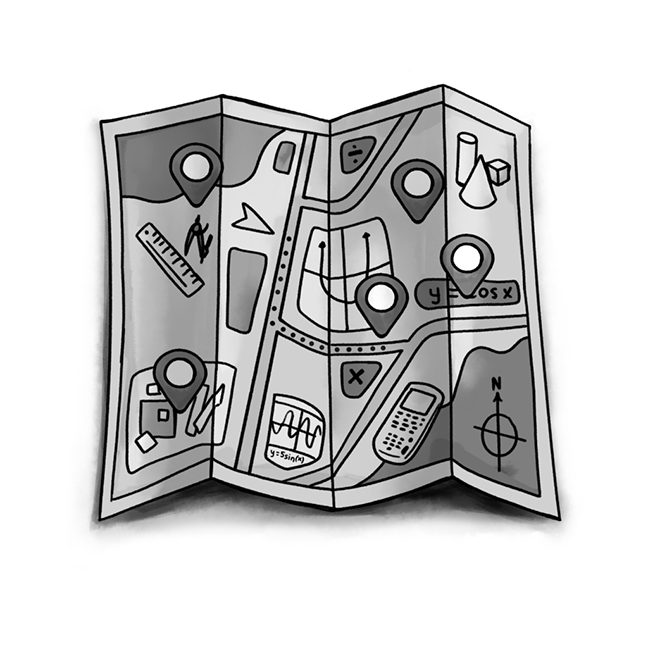Sharon Rendon, Director of Professional Learning, sharonrendon@cpm.org
Have you ever stopped to consider what elements go into a masterful musical composition? Recently I had the opportunity to see the Broadway musical Hamilton and was amazed at the music, costumes, and acting. This experience got me thinking about how this relates to the math classroom. What components are necessary to create a mathematical masterpiece? Three necessary components that contribute to mathematical experiences for students are the score or piece of music, the conductor, and the musicians. However, a wonderful masterpiece does not just happen because those three elements are present. Let’s focus on two of those elements, the score itself and the actions of the conductor in relation to a math masterpiece.
A symphony will start with a great score. The foundation of a great math experience is to have a well-written progression of concepts and learning opportunities. CPM authors have provided this in the books. One of the most powerful examples of this is the development of linear relationships. Students have the opportunity to start with tile patterns and growth problems before moving to the more abstract concepts of slope and y-intercept. This set of tasks allows students to develop understanding and make connections over time.
It is critical that the conductors use the score as intended, with minimum adjustments. If the cognitive level or design of the tasks or progression is altered greatly, the masterpiece will be affected. Imagine a conductor deciding to play the reprise at the beginning and then move the prelude towards the end of the piece. Or if the conductor decides to have the trumpets play the flute parts, because it is too difficult for the flute section, the musical piece may not be as beautiful as intended. The conductor must carefully consider the effect changes to the score will have on the final production.
The second element necessary to produce a masterpiece is the actions the conductor might take to create an amazing experience for the instrumentalists. This is related to the mathematics instructor and their students. First, instructors must be learners themselves. There are always ideas and strategies to be learned and developed. There are many different venues to use in one’s learning path. Some of the best learning an instructor can have comes from observing their students. Many times students will be more creative problem-solvers and creative thinkers than their instructor. Another learning opportunity comes from CPM Educational Program, which provides teacher leaders who offer strategies and feedback through workshops, site visits, and coaching. An additional learning opportunity can be found in the power of collaboration with each other by creating collaborative work teams. Seek out a couple of colleagues that would be willing to learn alongside you. If you have a formalized “PLC” structure take advantage of that in order to impact both your practice and student learning. And finally, an instructor might participate in a book study or use the power of social media to facilitate their learning. Jo Boaler’s Facebook page, Twitter, and blogs provide a great opportunity to collaborate virtually with other instructors.
Becoming a reflective practitioner is also a key action a mathematics classroom conductor might take to produce a mathematical masterpiece. One method of reflecting is to ask a colleague to observe you. See #observeme for more ideas on how you might incorporate this strategy. Another fairly new strategy, called Pineapple Charts, allows teachers to post on a calendar when they will have lessons to watch or strategies they would like feedback on.
There is also the power of using a coach. If you have coaches in your building or district, reach out to them and ask them to collaborate with you to focus on an element of your practice. Working with a coach is a great way to focus on the next step in your journey as a practitioner. Coaches are not in the business of “fixing” teachers, just supporting them in taking risks and look at student learning.
Finally, mathematics instructors will be successful at creating masterful learning experiences when with they are committed to continual growth. This process will take time and require extended efforts. One of CPM’s guiding principles is that mastery takes time. This is not only true for students, but also for teachers as well. When you are in the midst of practices that do not sound great, that are messy, and you think are not working, you must remember that great results take work and practice. Stay committed to the process and continue to be committed to improving as time goes on.
Which of the ideas in this article need attention from you? How might you commit to making those actions happen? As you are continuing to craft your masterpiece and create sense-making, meaningful learning experiences, remember to take intentional actions toward improving your practice.
